How is a house wired?
A house is wired by connecting the neutral and live wires to a pole line or underground through a conduit. These main wires go directly to a circuit box from the closest pole. The main ground wire is connected from the circuit panel to a grounding wire that is dug deep into the ground for safety. The wires should be connected very tightly. The ground wire will direct the current back to the source. With no ground wire, the electrical current will be directed to a person that touches the circuit box or a naked wire. Installing the ground wire is one of the most basic rules of wiring but there are more as we will show you below.
Before doing anything, you should contact your local electrical service provider to carry out the entire wiring process. You should NOT attempt to wire your house by yourself. Technicians strictly handle wiring due to the dangers of electricity.
Below, are the basic rules of wiring you should follow for efficiency and safety.
Basic Rules Of Electrical Wiring
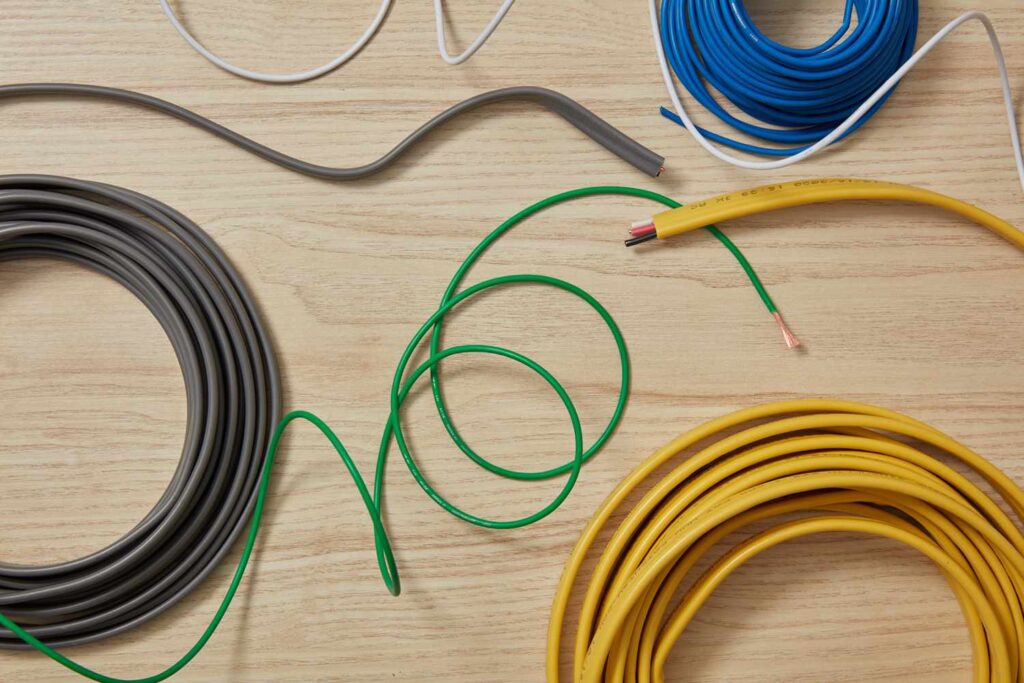
1. Ensure the environment is moisture-free
Water is a really good conductor. Wiring with moisturized hands will result in an electrical shock. Before handling electrical wires, rub your hands dry. Using bare hands is not a hundred percent safe. Special gloves insulated with rubber are a much better and safer method to handle electrical wires.
2. Install a grounding wire
A ground wire is connected from all outlets to a rod dug deep in the ground. A grounding wire will direct the current back to the main source. This is a precautionary measure that will prevent electrical shocks. Without a grounding wire, the current will go into your body. This is a high-voltage current that has very minimal chances of survival. Your ground wire should always be tightly connected.
3. Proper wire insulation
Insulation is necessary for electrical wiring to prevent shocks. Before you begin wiring, check that your wire is fully insulated. After wiring, just to be sure, add a plastic cover on top of your wire. In case of damages to your wiring, you should contact an electrical technician with immediate effect. Naked wires pass active electricity. When touched, they release heavy electrical shocks.
4. Do not overload the circuit
Do not overload your electrical circuit. Overloaded circuits are when a single circuit is responsible for more than 10 outlets. One outlet produces 1.5 amps. This will in turn allow 10 outlets to operate with a single 20-amp circuit. When you exceed the number of outlets, the cable will either turn off electricity or overheat and melt. This will end up causing a fire. We have prepared a table of the circuit amperage against the number of outlets it supports.
| Circuit Amperage | Number of outlets |
|---|---|
| 20 AMPS | 10 Outlets |
| 40 AMPS | 20 Outlets |
| 60 AMPS | 30 Outlets |
| 80 AMPS | 40 Outlets |
| 100 AMPS | 50 Outlets |
5. Use copper conductors
Electrical wires made from copper are considered the best electrical conductors. Copper is resistant to heat. When working with a small budget, copper wire is relatively cheaper compared to other wire materials. Copper is considered very strong, it does not break easily under pressure. A copper wire will, therefore, last longer compared to Aluminium and Steel among others.
5. Ensure you use freshly bought wires
You should use new electrical wires when wiring your house. Re-used wires come with a lot of demerits. Firstly, their length is shortened. These wires may also be damaged from before. The damage may be unnoticeable to the naked eye and this may cause unforeseen disasters like electrocutions. If your house is already wired, you should call an electrical technician every once in a while to assess if there are any damages that you haven’t noticed yet. Replace the wires that have a problem protecting your home from electrocution.
7. Turn off the main switch before wiring your house
Live electrical wires are extremely dangerous when wiring. How can you go around this? In every home, there is a main circuit box with a main switch. The main switch receives electricity from the main supply. Turn off the main switch and the wires will stop conducting electricity. This is a preventive measure against electrocution.
8. Make use of electrical technicians
When wiring your house, it is common sense to use professionals. Handling electrical wires without complete knowledge is detrimental to you and your family. Hiring a technician is the best option. A technician will ensure that all wires are covered properly. They will also correct any problem that you may have noticed earlier on. Your and your family’s safety will be guaranteed.
Types Of Electrical Wiring Systems In Houses
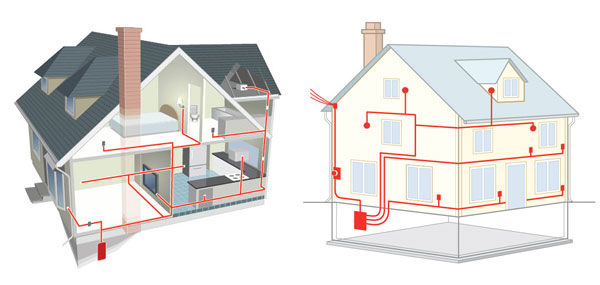
There are different electrical wiring systems, each system with a unique use. Before you wire your house, you should be well-versed in these wiring systems. Below is a detailed explanation of the electrical wiring systems used in houses and their uses.
1. Wooden casing and capping wiring
A wooden casing wiring is a type of wiring where an electrical wire has a wooden outer cover as its insulation. Capping wiring is a type of wiring with PVC insulated wires. The wires are enclosed in a plastic cover and have a cap for protection. Wiring with wooden casing and plastic casing prevents electrocution. This is a safe method of wiring your house.
2. Non-metallic (NM) cables
Non-metallic cables come with more than one insulated conductor. It comes as one wire with the main plastic insulated conductor as the outer case. Inside the main casing, is a couple of other wires. The wires have their own plastic casings. These cables are used indoors. They connect switches and other branch circuits.
3. Armored cables
Armored cables are used for external wiring by being dug in the ground. They come with an outer metallic casing that protects the wires inside from external impacts that may cause damage. This protective measure increases the durability of the wire. Wires are protected by the metal casing from exposure to moisture preventing them from wearing out. They are installed in places with high traffic. They can withstand this due to their strong nature.
4. CTS sheathed wiring
Capacitive Transfer System is a wiring system that uses a linear capacitator to increase the flow of electricity through a wire. It is used for internal wiring. It is not common in homes but is used in commercial buildings. Companies that use a lot of electricity prefer this due to its ability to lower the loss of electricity and still increase the flow of electricity. It saves companies a lot of money.
5. Solar cables
Solar cables are used to connect the solar panel to electrical outlets. These are the charging system and the inverter Solar energy has increased in popularity recently due to its eco-friendly features. Solar cables come with their panels.
6. Underground feeder cables
Underground feeder cables, as the name suggests, are dug into the ground. They are commonly used to connect electricity to outdoor electrical appliances. When you want to erect security lights, you will use this cable. They come as a better option than letting wires hang in the air.
Components Of Electrical Wiring For Houses
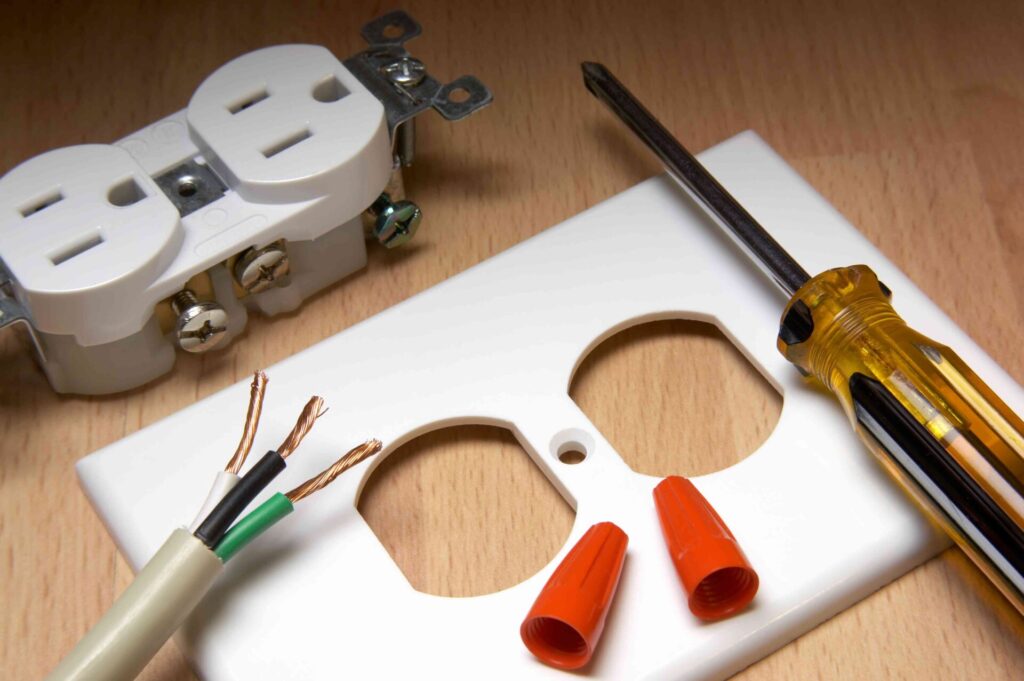
When wiring your house, the following are some of the tools you will need.
1. Main switch
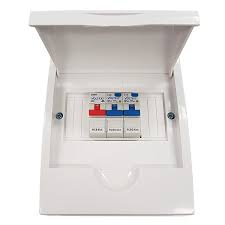
A main switch connects to all the electrical outlets. It gives you the power to switch off all electrical appliances from one point. When the main switch is turned off, the flow of electrical current seizes completely. It is commonly used when you want to fix a wiring problem, for instance covering a naked wire.
2. Sockets
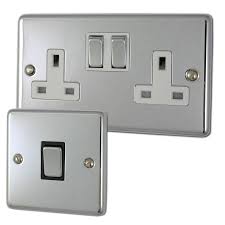
Plug sockets are electrical outlets that allow you to connect external electrical appliances like blenders and irons. They come in different types and styles. They are fixed into the walls of your houses. They have three holes normally where you will plug in appliances to power them.
3. Breaker box
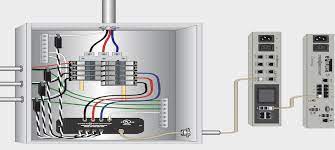
A breaker box is the main panel that receives electricity from the power line. From the breaker box, electricity is then connected to your house. It acts as a central point of wiring. A breaker box controls the amount of electricity going into the house. It ensures that it does not exceed the circuit load preventing explosions due to excessive voltage.
4. Wall switches
Wall switches are used to turn off and turn on bulbs. This helps to control the amount of electricity being used. Bulbs are turned on only when you want to use them and when not in use, they are turned off. They come with different numbers of switches depending on the number of bulbs in the room. They have 1-4 switches on average
5. Residual current circuit breaker (RCCB)
They control the amount of electricity that leaks out. They sense when this is about to happen and trip against it. This prevents electrical shocks. It is a necessary component to safeguard your appliances from being destroyed when there is a leakage in electricity.
FAQs About Electrical Wiring Of A House
Knowing the difference between the neutral wire and the live wire. The neutral wire transfers electrical current back to the main source. It is usually white in color. The live or hot wire carries live electrical current. They are black in color.
Your home is wired by connecting parallel circuits through a live wire. The most common type of wire used is non-metallic cables.
10 outlets. One outlet produces 1.5 amps. This will in turn allow 10 outlets to operate with a single 20-amp circuit. The limit is placed as a rule to protect you from electrical dangers. When you exceed 10 outlets, the circuit will overload and the electricity will go off. In extreme cases, the cable overheats and melts starting a fire.
The neutral and live wire. The neutral wire will transfer electrical current back to the source. A live wire carries electrical current from the power supply.
Non-Metallic (NM) cable. The cable comes with a live wire, neutral wire, and earth wire enclosed in one casing. The three types of wires are also separated with their own plastic casings and in different colors. They are used as branch cables connecting to plug switches and wall switches.
– No visible naked wires
– Fuses are not discolored
– No buzzing sounds from switches
– Lights are not dim or flickering
– No sparks from sockets or the main switch
Complete electrical house wiring diagram video
DISCLAIMER
Wiring a house is a potentially dangerous task and you should take a short course in electrical wiring before you undertake the project. It is also advisable to work with a licensed electrician.